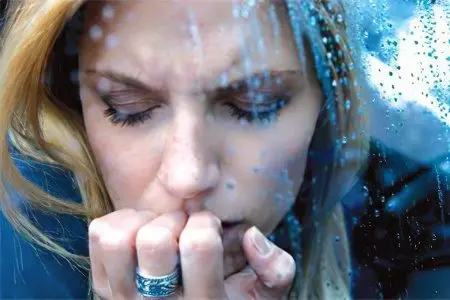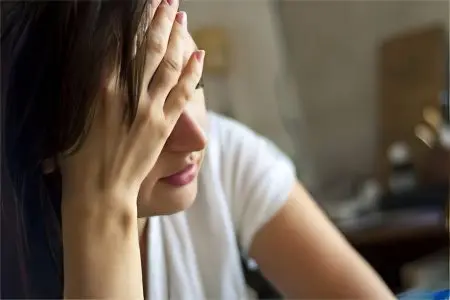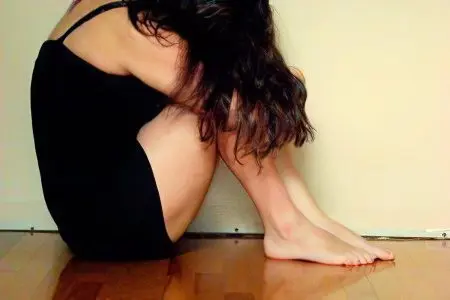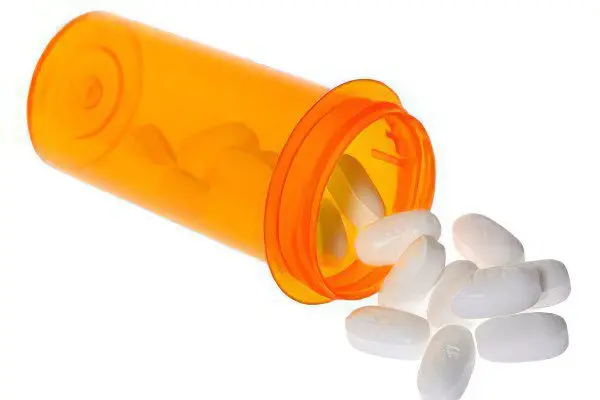Contents
Feelings of sadness and slight sadness are familiar to all people. Sometimes it happens that a depressed state haunts a person for a long time and does not allow him to enjoy life. In this case, words such as “depression”, “depressive disorder” pop up. Due to the peculiarities of the psyche, women are more prone to protracted blues. Doctors say today that severe or clinical depression occurs in the fair sex 2-3 times more often than in men. How to recognize depression, get out of this state and start living with a positive attitude?
What is depression?
Women’s depression is not just a bad mood. Now it is fashionable to designate with this word any bouts of melancholy and apathy. In fact, depression refers to a disease, with varying degrees of severity and its own symptoms. During this state, a person cannot live and work normally, study and perform his daily duties. Feelings of sadness and apathy are pronounced and last for a long time, at least 2 weeks. There are cases when depression accompanies a person for six months or more.
Protracted blues never arises from scratch. The disease is preceded by a crisis, some important events in life. The death of a loved one, divorce, dismissal from work, expulsion from the institute, rupture of socially significant ties – the reason for the disorder always has a personal connotation.
There are people with a depressive personality, in which strong stressful situations trigger the mechanism of the disease. If you do not solve the problem on your own or with the help of specialists, depression can drag on and cause serious harm to the human psyche and its socialization. Close people of a woman prone to blues need to be especially careful and not miss the alarming symptoms.
Symptoms of depression in women

Since women are more emotional in nature, they should listen more carefully to their soul. The symptoms of depression are extensive and affect both the woman’s emotional background and bodily manifestations. When diagnosing, it must be taken into account that there must be several signs of a depressive disorder that bother a woman for more than 2 weeks, prevent her from living and working fully. In a word, they are quite pronounced and permanent.
Among the emotional manifestations of depression, it is customary to single out:
Feeling of melancholy, constant oppressed and depressed mood.
Feeling of despair, loss of the meaning of life.
Exacerbation of various fears and phobias.
Anxious thoughts, accompanied by internal tension and a premonition of trouble.
Irritability for no particular reason, sudden mood swings.
Feelings of guilt and self-flagellation.
Decreased self-esteem, self-confidence. A woman is looking for flaws in herself and is constantly dissatisfied with herself.
Activities that used to bring happiness and pleasure are no longer satisfying enough.
Interest in the outside world is declining.
The woman becomes unemotional, there is a “dullness” of feelings.
There is increased anxiety and concern for the health and fate of loved ones.
There is a fear of making a mistake in the performance of public affairs.
Equally important in the diagnosis of physiological symptoms of depression. It is especially important to pay attention to them when a woman is unable to adequately describe her feelings and emotions.
The bodily symptoms of a depressive disorder are quite common:
Sleep is disturbed. Both insomnia and increased drowsiness are possible.
There is an appetite disorder. It either disappears or increases significantly.
Bowel function is impaired. Most often there are constipation.
Lost or significantly reduced libido. Sex becomes uninteresting and unnecessary.
The energy potential decreases, the usual physical or mental stress causes a breakdown, increased fatigue.
There are pains and discomfort in the body. Localization – heart, stomach, muscles.
It happens that a woman treats physical ailments and misses the symptoms of depression, so a comprehensive diagnosis is important, which also allows you to identify behavioral manifestations of depression.
The behavioral symptoms of the disease are as follows:
Apathy, passivity, lack of desire to be involved in active and purposeful activities.
Decreased socialization. A woman avoids contact with other people, more often retires, loses interest in people around her.
Conscious rejection of entertainment.
Tendency to bad habits. The woman resorts to alcohol, cigarettes and other psychoactive substances that provide temporary relief.
Reduced requirements for personal hygiene.
There are also so-called “mental, cognitive signs of depression.”
Specialists in diagnosing the disease pay attention to the following symptoms:
Difficulty in focusing and concentrating on an object.
Difficulties in making decisions.
The dominance of negative and disturbing thoughts about one’s personality, life, the world around.
Suicidal thoughts.
There are thoughts of personal worthlessness, helplessness and uselessness.
Thought processes slow down, there is an effect of “inhibition”.
A specialist usually makes a diagnosis of depression based on several signs that appear for at least 2-3 weeks. Only complex diagnostics can reveal the presence of depression, its stage, form. But in order for a woman or her loved ones to recognize the disease in time, it is necessary to know the signs of depression. Therefore, self-diagnosis is an important factor in the prevention and treatment of mental disorders.
Causes of depression in women

Any disease is easier to prevent, so it is equally important to know about the causes of prolonged blues and apathy. The origins of the disease can be both genetic in nature and have external conditions under them.
Genetic causes of depression in women. If a disease has already been encountered in the female line, especially in a clinical form, then other family members may experience the same problems. But this does not mean that if your mother suffered from depression, then you will 100% get this disease.
biochemical factors. Experts note that in women suffering from major depression, the biochemical processes in the brain are different from the usual ones. The disorder can also be caused by taking certain medications, in particular hormonal drugs. There are frequent cases when drugs taken by a woman, on the contrary, softened the manifestations of depression.
Environment and social environment. The trigger that triggers depression is often the stress of the world. The loss of a loved one, conflicting relationships with loved ones, the birth of a child, credit and other financial problems, the loss of a job – all this can provoke the development of depression in a woman. In the absence of an arranged personal life, when a woman is forced to provide for her family alone, the likelihood of depression with a certain temperament increases several times. Also, a difficult relationship with a spouse, lack of happiness in marriage can provoke a depressive disorder. The social causes of depression among women also include alcohol and drug abuse. Mild emotional disorders are aggravated by addictions, provoking the development of the disease.
Other psychological and social reasons. Pessimists and people with low self-esteem are more prone to depressive disorders. Self-esteem in women is unstable and often depends on external factors, on the admiration and approval of other people. The inability to adequately respond to stress and negative manifestations of the outside world provokes prolonged blues and emotional disorders. Women are more likely to think negatively, so it is more difficult for them to withstand stress. If we consider the causes of depression in women based on their life path, then each age segment will have its own origins of the onset of the disease.
Youth. Research by experts suggests that at the moment when a girl becomes a teenager, and this is the age of 11-13 years, the level of depression begins to rise rapidly. Hormonal changes, psychological factors, personality problems contribute to the appearance of depression, as well as anxiety disorders, eating disorders. If during the period of growing up a girl was subjected to sexual violence, the likelihood of severe, clinical depression increases several times.
reproductive age. The behavior of women depends on hormones, their mood is affected by the menstrual cycle, pregnancy, the postpartum period, menopause. The presence of infertility or a conscious decision not to have children can also cause depression. If a woman has a pronounced postpartum depression, it means that she has previously experienced similar difficulties. Postpartum depression can manifest itself as mild mood swings, bouts of sadness, or it can take the form of a serious illness, accompanied by a loss of ability to care for a child. Wanted pregnancy rarely causes depression. Even a conscious abortion does not always lead to prolonged blues and psychosomatic disorders. Postpartum depression occurs in 10-15% of women. Its causes most often lie in hereditary factors, hormonal changes and increased emotional and physical stress on a woman. The usual way of life is collapsing, it is no longer possible to live as before, responsibility for the child appears. Single mothers are especially susceptible to depression. Husbands who suspect their wife has postpartum depression should take action. Otherwise, there is a risk of life for both the young mother and the child. If a woman has already been treated for severe depression after the birth of her first child, it is more likely that a second birth will cause the same symptoms. It is important to be prepared for this moment and start treatment as early as possible.
Elderly age. Loneliness, alienation of children, loss of a spouse, friends can contribute to depression in old age. Old people are prone to blues when left alone. The feeling of abandonment can torment a woman very much. Here it is important to look for inspiration and meaning of life in grandchildren, hobbies, gardening, etc.
Forms of depression

Specialists distinguish today several dozen forms of depression, only about sixty. The most common today is bipolar, postpartum, major depression.
The main forms of depressive disorders are as follows:
Big depression. It is also called “monopolar”, or clinically pronounced. The disease is accompanied by melancholy, low self-esteem, negative mood, “inhibition” of thinking, mood swings. With a protracted form, it requires the intervention of a doctor and taking antidepressants.
psychotic form. In addition to depression, hallucinations and delusions develop. High risk of suicide due to depression.
Bipolar form. It got its name because of the alternation of mood swings, which are manic in nature, and periods of a sharp decline, when a sad mood prevails. Between mood swings and activity, a person’s mood is normal. Manic-depressive syndrome is the most difficult to treat. Due to bursts of manic activity, a person can harm himself and others, commit illegal acts.
Seasonal depression. There are spring and autumn depressions. Often found among women. Features of daylight hours and hormonal changes leave a certain imprint on the female psyche. It happens that a woman cannot cope with seasonal depression on her own, and she goes into more serious stages.
Physical form. It occurs as a result of a serious illness that threatens the life and health of a woman. After a severe diagnosis, depression sets in. It often accompanies oncological diseases, disability, injuries and other diseases that “unsettle”.
postpartum depression. Refers to a severe form of depressive disorders. The disease affects psychosomatics, possibly antisocial behavior, so it cannot be started. In some cases, postpartum psychosis may develop, accompanied by delusions, hallucinations, and suicidal thoughts. The disorder can last from several months to several years.
Anxious depression. A woman is constantly in painful thoughts and fear for loved ones, her financial situation, health, etc.
dystrophic form. The disease is manifested by outbreaks of irritability and an evil-dreary mood. A woman “discharges” at others, but these are not signs of fatigue or character traits. Severe depression can lead to severe aggression and delinquent behavior.
ironic form. The disease is also called “smiling” depression. Irony and laughter here act as a protective reaction of the body to stress. A dangerous form, as a woman remains socially active, but she is often visited by suicidal thoughts.
adynamic depression. Among the main signs of the disorder are excessive fatigue, exhaustion of strength, constant weakness. With an adynamic form, a woman is fenced off from the world.
Tearful depression. Men, too, despite stereotypes, can suffer from this form of the disorder. But still, the weaker sex suffers from tearful depression more often. Predominantly older women become overly self-pitying and reproach relatives and people around them for a lack of care and attention.
asthenic form. It is characterized by dullness of feelings and emotions. Indifference to the world around us is manifested in the absence of joy and sadness, anxiety and other emotions. A woman “forgets” about what once pleased her and sincerely does not understand how one can experience emotions from such things.
Somatized the form. Patients with this type of depression are frequent guests of polyclinics. They complain of headache, burning in the chest, migrating pains. At the same time, somatic symptoms almost completely imitate known diseases. If latent depression is not recognized in time, a person can be treated for non-existent diseases for a long time. According to some studies, every second patient in the clinic actually suffers from latent depression.
Whatever the causes and forms of depression, the disease is usually divided according to severity.
Degrees of female depression

Doctors today distinguish the following types of depression:
Lightweight;
Medium;
Heavy.
mild depression
A mild form of depression may well end in recovery without medication. Symptoms of the disease are mild, rare. Often the disease is chronic, and a woman lives for years in this condition. A mild form of depression is also called dysthymia. The chronic form of the disease can be caused by a reduced level of the hormone serotonin in the blood.
Symptoms of mild depression are easy to diagnose:
A persistent feeling of sadness and emptiness.
Sleep disturbances.
Persistent negative feelings: hopelessness, helplessness, guilt.
Loss of “taste of life”.
Mental or physical retardation.
Migraine, joint pain and digestive disorders.
Suicidal thoughts.
To prevent a mild form from passing into a more serious stage of the disease, it is advisable to take therapeutic or preventive measures. Contrary to myths and stereotypes, no one will register a woman suffering from depression with a psychiatrist. Dispensary services may be needed only if there have been previous suicide attempts. With mild depression, behavioral features already begin to appear. For example, a woman ceases to carefully monitor her appearance, loses interest in sex.
Average depression
Depression of moderate severity is already noticeable to others. It is difficult for a woman to switch from negative thoughts. Labor productivity is low, many things are done “automatically”. Sleep disturbances are permanent, it is becoming more and more difficult to interact with others. Negative thoughts are intrusive. In behavior there is stiffness, passivity.
Severe depression
With severe, deep depression, in addition to psychosomatic manifestations, malnutrition and hygiene are added. The woman tries not to leave the apartment, withdraws into herself, there is almost no interest in the outside world. Activity and desire to do something are at zero. Thoughts of suicide, delusions, hallucinations are not uncommon. Particularly severe depression should be treated in a hospital.
Severe depression includes postpartum syndrome and postpartum psychosis, so they must be treated.
How to deal with depression?

Despite the frightening symptoms and outlook, depression, especially in the early stages, is easily treatable. Preventive measures are also important. If your relatives have had severe depression, try to minimize the risks.
Maintain mental and physical health, observe the daily routine, get enough sleep. Try to lead a healthy lifestyle, avoid addictions, especially alcohol. Watch your diet, move more, especially in the fresh air. Try to minimize stress in your life. Establish warm and close ties with friends, find a hobby for yourself, look to the future with optimism.
But if depression has already happened and is diagnosed, both medication and alternative treatments will help.
Treating depression with medication
Most often, especially with moderate and severe severity, drug therapy is prescribed. It is most effective to combine medication and psychotherapy.
Antidepressants is a fairly well-known concept. Today, for the treatment of patients with depression, both the latest, including serotonin reuptake inhibitors (SSRIs), and tricyclic antidepressants are used. New generation drugs usually have fewer side effects.
MAOI. In addition to antidepressants, doctors also prescribe minoamine oxidase inhibitors (MAOIs), all of which are designed to act on areas of the human brain responsible for mood and emotional background.
lithium salt. Lithium has been used to treat bipolar disorder for many years. The drug can reduce mood swings. During treatment, the dosage must be carefully monitored. An effective dose can easily become toxic. Lithium salt is not recommended for use in diseases of the thyroid gland, kidney and heart diseases. Patients with epilepsy are also not prescribed this medicine.
Carbamazepine and valproate. Carbamazepine and valproate can stabilize mood and emotional background. Both drugs are widely used in clinical practice for the treatment of bipolar depression.
other medicines. There are cases when, in addition to antidepressants and anticonvulsants, other drugs are prescribed that stabilize sleep and eating behavior. Complex therapy allows you to more effectively fight the disease and prevent its reappearance.
The effectiveness of drug treatment depends on several factors, including a trusting relationship with the doctor, high-quality and reliable feedback, careful adherence to dosage, treatment regimens and recommendations. It is important to understand that the possible side effects of drugs are much less than the effects of severe depression. It is impossible to interrupt therapy, reduce the recommended dosage, or randomly take the medicine.
The main steps in the medical treatment of depression include the following steps:
The choice of an antidepressant, the selection of an effective therapeutic dose and treatment regimen.
The main course of therapy.
Supportive course of treatment, which usually lasts 4-6 months. It is designed to prevent recurrence.
Psychotherapy is effective for mild to moderate depression and is an adjunct to drug treatment. Psychotherapeutic conversations, psychodynamic and behavioral psychotherapy help a woman cope with depression. Cognitive Behavioral Therapy changes negative thinking to positive, and as a result, a person’s behavior changes.
An experienced psychotherapist is able to help the client cope with the symptoms of depression in 10-30 sessions and teach him to respond positively to stress so that he can prevent the disease himself in the future.
Treating depression at home

Today, non-drug treatment of depression is also widespread. Especially diseases of mild and moderate severity. At home, you can treat the disease with herbs, auto-training, relaxing techniques.
St. John’s wort has proven itself well in the treatment of depression. St. John’s wort extract is used today even in the USA and Germany.
Also, decoctions of the following herbs affect the emotional background:
Chamomile;
Hop cones;
Melissa root;
Peppermint;
Ginseng;
Ivan-tea;
Motherwort;
Valerian root.
Decoctions and tinctures of herbs should be drunk for a long time, at least 1-2 weeks and after consulting a doctor.
Treatment of depression at home also includes adherence to the daily routine, diet and stress management.
The following ways will help prevent depression and cope with the disease at an early stage:
Eat 1 banana per day. They are rich in serotonin and can improve mood.
Eat 100-200 grams of carrots a day. Available as fresh juice.
Take relaxing warm baths in the evenings. In water, you can add a decoction of lemon balm, honey.
Take 15-20 drops of Eleutherococcus tincture 2 times a day, half an hour before meals. It is advisable to drink the tincture in the morning.
Eliminate alcohol, cigarettes, coffee, hot spices and harmful chemical additives from the diet.
Eat fruit daily, especially apples.
Do auto-training to relax and deal with stress.
Practice your favorite sports, including yoga and other relaxation techniques.
In the absence of contraindications, regularly visit the bathhouse, swimming pool, and practice hardening procedures.
Engage in self-education and self-development, then there will be no room for the blues.
Learn the techniques of positive thinking.
Adjust the lifestyle that led to blues and depression. Change work, environment, hobbies, remove stressors if possible.
Go outside every day for a walk.
Sleep at least 8 hours a day.
Take vitamin complexes regularly.
Take a course of acupuncture.
Sign up for a relaxing massage course.
Look for a source of positive in yourself, love yourself, increase your self-esteem.
If non-drug treatments for depression do not help, you should make an appointment with a psychotherapist or psychologist. Depression is a fairly common illness. No one will label a woman and send her to the hospital. Treatment of depressive disorders in a hospital is rare, mainly with severe clinical manifestations. Close people of a woman also need to watch out for the symptoms of depression and seek help in time.
Even if you need to prescribe antidepressants, do not be afraid. Modern drugs are not addictive, have a minimum of side effects and can cure depression and prevent relapses in a fairly short time.
[Video] Dr. Berg – How to increase serotonin levels? Say goodbye to depression:









